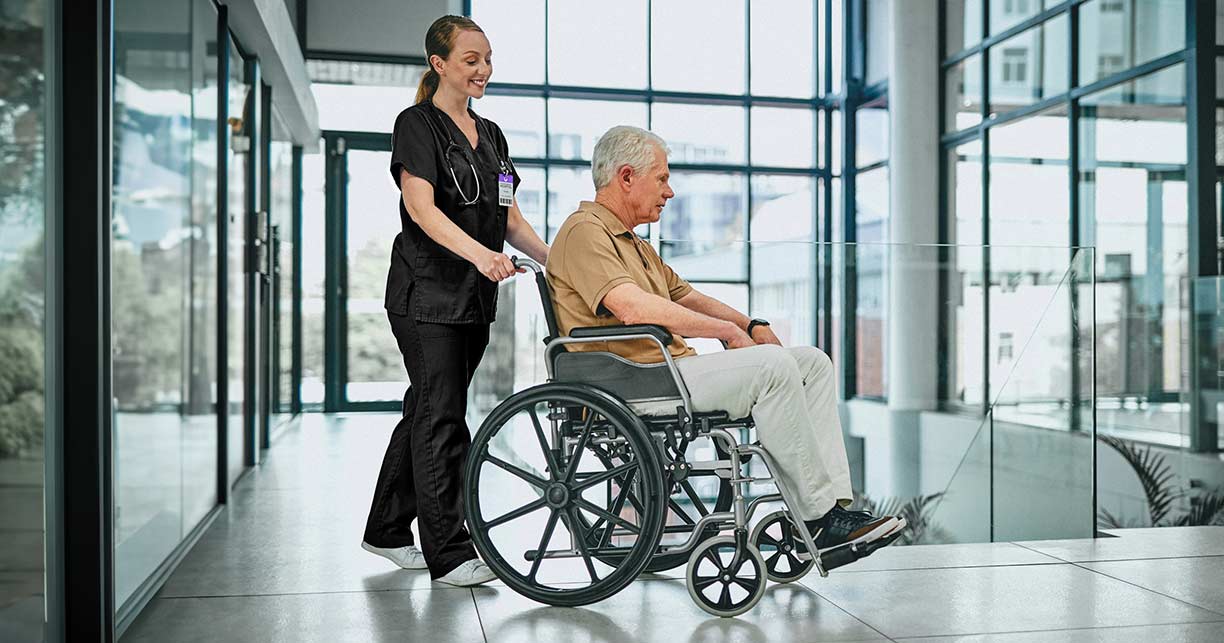Keeping patients out of the hospital: That’s a shared goal of home-based care agencies.
Hospitalization, and especially readmission, is costly and unnecessary in some instances. However, it continues to impact patients all over the country.
Enhabit Home Health & Hospice’s 30-day hospital readmission rate is below the national average of 18.2%.
“At Enhabit, we know patients don’t want to be stuck in a hospital or rely on emergency care,” Vice President of Care Transitions Kristi Wimberly said. “They want to receive care from the comfort of wherever they call home. One way we are able to meet our patients’ wishes and keep them safe and healthy at home is through our Care Transitions Program.”
Care transitions: What is it?
The University of Colorado’s Dr. Eric Coleman brought to light the importance of care transitions.
Dr. Coleman and his colleagues created the Care Transitions Model to focus on support and education for a patient and their loved ones as they transition home from the hospital. This process is often called transitional care.
“Dr. Coleman’s work is the foundation for our Care Transitions Program,” Wimberly said. “His findings uncovered that placing special attention on the process of transitioning home from the hospital resulted in less readmissions to the hospital. When patients experience our Care Transitions Program, they experience better communication between health care providers, greater education about their condition and overall better outcomes in their recovery.”
Dr. Coleman’s model includes the utilization of a “Transition Coach.” The Transition Coach is a trained nurse that helps patients and their caregivers with issues such as managing medications, following post-hospital recommendations and providing condition-specific education.
The Transition Coach doesn’t just help patients as they’re leaving the hospital, but follows-up with them over four weeks post-discharge. There are similar positions at Enhabit called care transitions coordinators (for home health) and transition navigators (for hospice).

“Our care transitions coordinators and transition navigators are a vital part of our Care Transitions Program and process,” Wimberly said. “They are a resource to our patients and are available to meet with providers, patients and caregivers to help mitigate any risk related to transitioning home.”
Why is the care transitions process important?
Whenever medication lists don’t match, discharge plans are underdeveloped or too complex and family and home environments are underprepared, patients may feel the need to return to the hospital to further treat symptoms of their illness.
With special attention to transitional care, all of the aforementioned factors are controllable. When these factors are monitored and assessed, patients are less likely to need to return to the hospital for further care. They can instead focus on their recovery at home.
The health care system itself also benefits from attention to transitional care.
The average cost of a hospital readmission is around $15,000, according to a study from the Journal of Multidisciplinary Healthcare. And Medicare payments for unplanned rehospitalizations are estimated to be more than $17 billion annually.
Health care systems see savings in the total costs of care when patient care and risk mitigation is performed in the home rather than the hospital or emergency department.
What is the goal of Enhabit’s Care Transitions Program?
The goal of the Care Transitions Program is to complement a patient’s hospital discharge plans and reduce hospital readmissions, providing a safe and effective transition from one care setting to another.
At Enhabit, the Care Transitions Program includes the following interventions:
| Timely, on-site and/or virtual case conferencing to ensure home-based care teams know all details about a patient’s plan of care. |
| Risk stratification of patients to catch problems before they escalate and require emergency department attention. |
| Pre-admission drug regimen review to ensure patients understand all medications and the risks associated. |
| Obtaining all necessary paperwork and developing a personal health record (PHR) so a home-based care team or other physicians have seamless access to a patient’s plan of care. |
| Verification of physician follow-up visits to ensure adherence to a patient’s plan of care. |
| Determining disease-specific clinical pathways with front-loaded, evidence-based programs to teach self-management of a patient’s condition and equip them with checklists, zone tools and educative resources. |
| Conducting post discharge follow-up calls to ensure effective execution of transition and troubleshoot as necessary. |
How the Care Transitions Program can help home health patients
Both home health and hospice patients see the impact of transitional care. At Enhabit, having a lower-than-average rehospitalization rate means higher patient satisfaction and overall better outcomes for home health patients.
When patients remain at home, home health providers can spend time addressing other issues outside of patients’ medical complexities. These issues include significant structural or cognitive impairments and high social determinants of health risks.
“A patient may come to Enhabit after they are discharged from the hospital and we will apply our evidenced-based practices to help further treat their condition,” Wimberly said. “But we will also look at the patient’s levels of health literacy and if they are having any trouble with their economic stability, housing or access to care and community resources. These things have a big impact on a patient’s well-being, health and quality of life and when we include them in the care plan, the patient has a higher chance of better outcomes.”
How the Care Transitions Program can help hospice patients
If a home health patient becomes eligible for hospice care, Enhabit’s Care Transitions Program can assist with the transition to end-of-life care as well.
Transition navigators can help hospice patients and their families by:
- Assisting with the Medicare hospice benefit and advance care planning
- Coordinating patient interaction with social workers, chaplains and medical directors
- Obtaining appropriate documentation for terminal illness certification
- Helping coordinate durable medical equipment, supplies and medications
- Conducting post-discharge follow-up calls to ensure effective care transition
- Providing outcome reports and supporting quality communication
“Enhabit always ensures patients receive the right care at the right time,” Wimberly said. “Our role is to provide a seamless transition for patients who choose Enhabit, no matter what their health care needs are. Whether it’s transitioning home from the hospital or beginning their hospice care journey, our clinicians are with our patients every step of the way.”
At Enhabit, our skilled teams take a coordinated approach to creating a personalized care plan for every patient to help them achieve their specific goals. Learn more about our streamlined referral process that allows physicians to refer patients quickly and easily, providing them a smooth transition of care.
Social Share
At Enhabit our patients are our number one priority. From providing the latest medical practices to building deep personal connections, we’re focused on upholding every patient’s dignity, humanity and sense of control on their health care journey.
Home health
Our home health services give patients access to the care they deserve in the comfort of their own homes. From disease and injury management to recovery from surgery, our clinicians help patients confidently achieve their healthcare goals.
Hospice care
Our hospice care services place importance on the comfort of every patient living with a terminal illness. Our caring professionals are dedicated to providing not just physical care, but spiritual and emotional support to every patient and their loved ones.

 Back to Resource library
Back to Resource library




